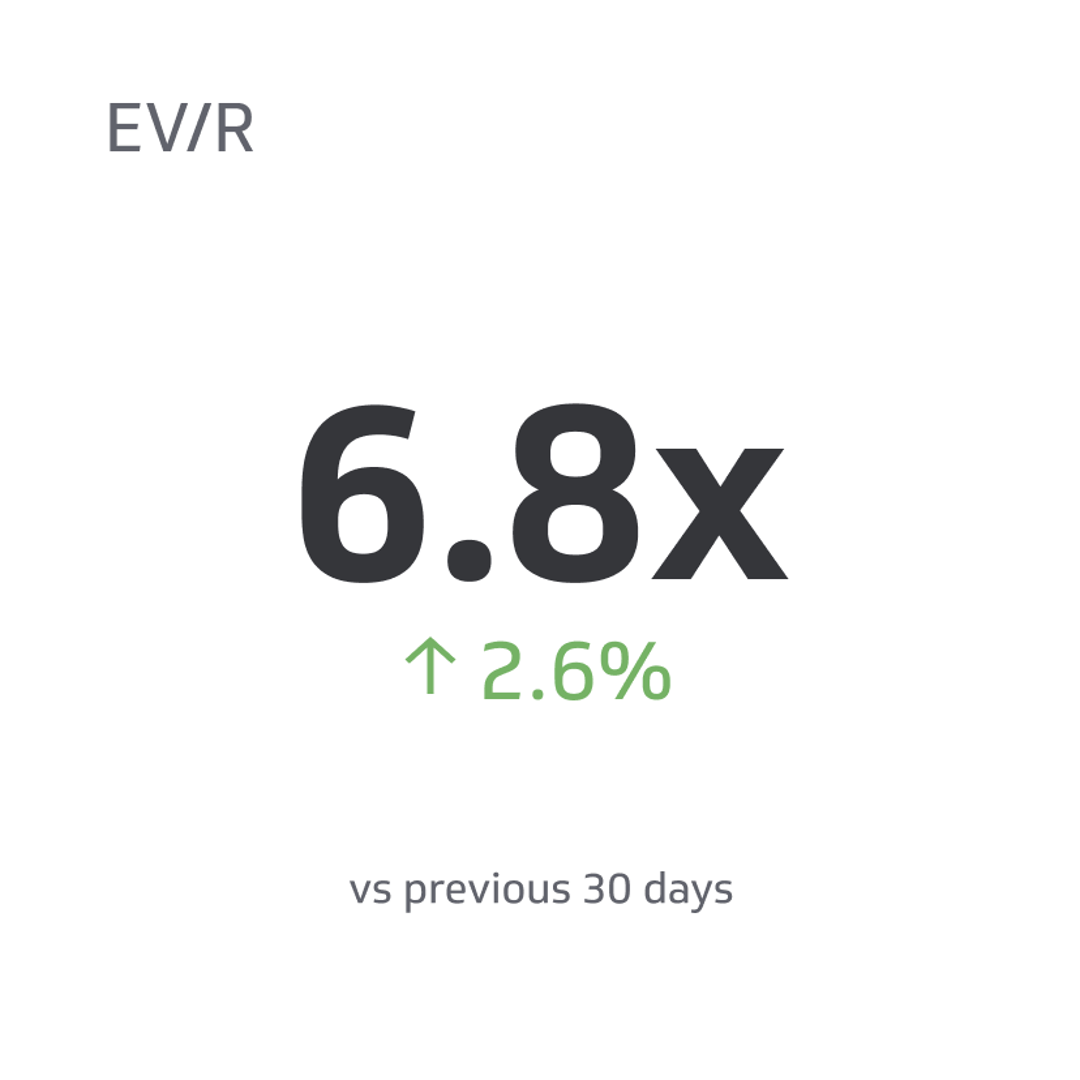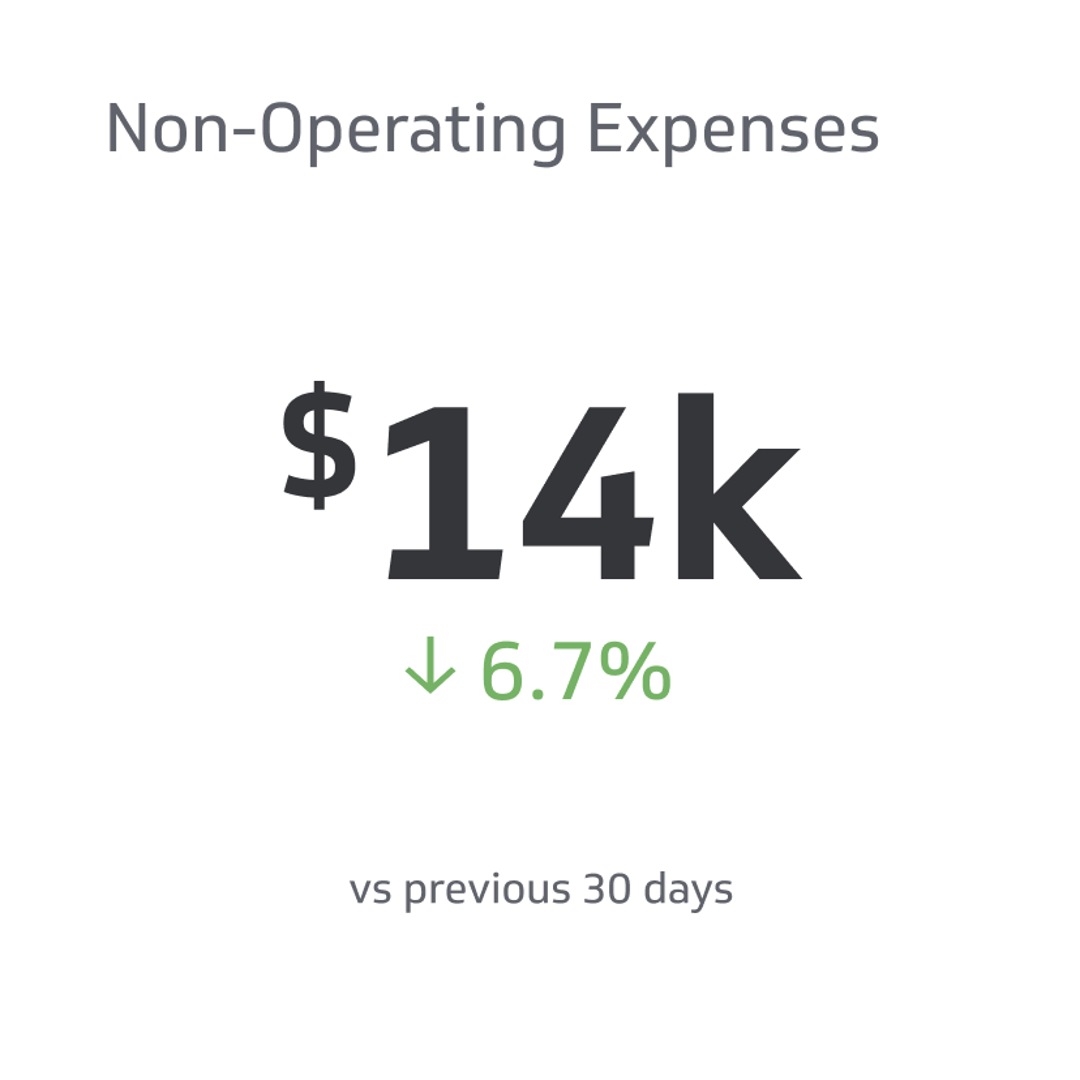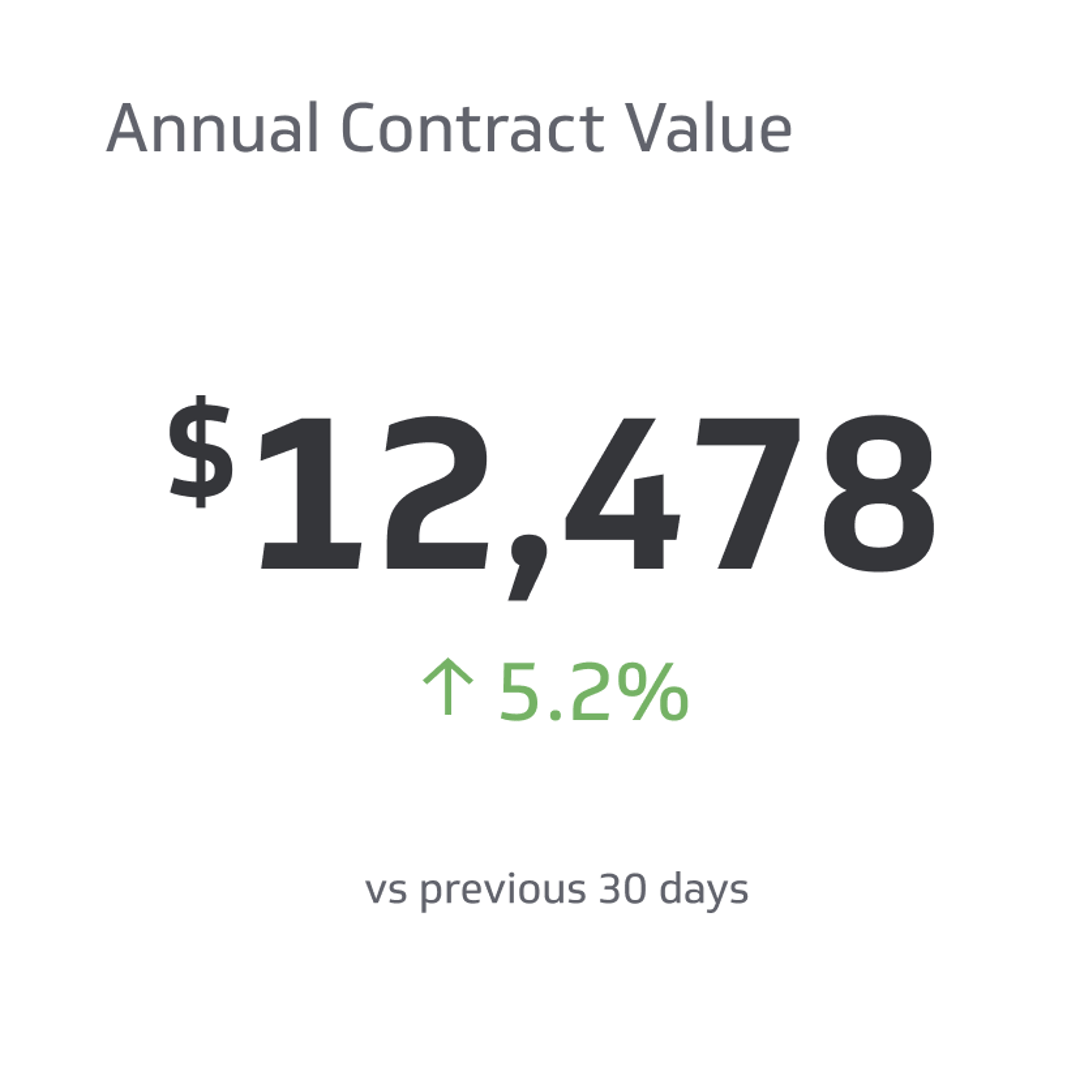Gross Revenue Retention
Gross Revenue Retention is not relevant to every industry, but you need to understand the finer points to know whether it could help your bottom line.
Track all your Financial KPIs in one place
Sign up for free and start making decisions for your business with confidence.

In today's competitive business landscape, maintaining a steady stream of revenue is part of any company’s long-term success. How do businesses track their ability to retain customers and keep the income flowing? Enter Gross Revenue Retention (GRR) - a vital financial metric that measures just that!
Join us as we delve into the world of GRR, explore its importance, and learn valuable strategies to maximize your company's retention rates.
Understanding Gross Revenue Retention
Gross Revenue Retention is not relevant to every industry, but you need to understand the finer points to know whether it could help your bottom line.
Defining Gross Revenue Retention And Its Importance
Gross Revenue Retention (GRR) is a financial metric that measures a company's ability to retain customers and maintain revenue, excluding expansion revenue from upsells, cross-sells, or upgrades.
It is one of the most important customer retention metrics for subscription-based companies and those in the SaaS industry. Understanding and tracking GRR allows them to evaluate the overall effectiveness of their customer retention strategies.
The importance of GRR extends beyond just holding onto customers; it also serves as an indicator for potential investors who consider this ratio when evaluating a company's worthiness for investment.
A stable or increasing GRR reflects favorably on the quality of products or services offered by a business and indicates positive customer satisfaction levels.
Comparing Gross And Net Revenue Retention
Gross Revenue Retention (GRR) and Net Revenue Retention (NRR) are two valuable financial metrics that highlight a company's ability to retain customers and maintain revenue.
The primary distinction between GRR and NRR lies in the inclusion or exclusion of expansion revenue.
GRR focuses solely on the money generated from existing customers without considering any additional income earned through upsells, cross-sells, or upgrades. This metric provides insights into how well your business can sustain its baseline revenue streams over time.
On the other hand, NRR factors retain customer revenue and account for growth activity, such as upselling and cross-selling opportunities with existing clients. NRR provides a more comprehensive picture of your company's overall retention performance.
By understanding these nuances between Gross Revenue Retention versus Net Revenue Retention rates, businesses can better pinpoint areas for improvement while leveraging their strengths in customer retention strategies.
Refining strategies based on GRR and NRR trends drives long-term success and sustains profitability across various industries.
Calculating Gross Revenue Retention
Calculating Gross Revenue Retention (GRR) helps you assess your company’s customer retention strategies to identify areas for improvement. To determine this metric, you must first identify your starting revenue from existing customers at the beginning of a specific period, such as a month or year.
Next, subtract any lost revenue from those customers who canceled or downgraded their subscriptions during that same time frame.
For example, if a SaaS company starts with $10,000 in Monthly Recurring Revenue (MRR) and loses $1,000 due to cancellations or downgrades over one month, its GRR would be calculated as (($10,000 - $1,000)/$10,000) x 100 = 90%.
This indicates that the business retained 90% of its original gross revenue for that specific period. Note that GRR can’t be greater than 100% at any point because it excludes upsells and add-ons.
Significance Of Gross Revenue Retention
Gross revenue retention reflects the effectiveness of a company's customer retention strategy, predicts future revenue and growth, and identifies areas for improvement.
Reflecting Customer Retention Effectiveness
One of the most significant reasons Gross Revenue Retention (GRR) is an essential business metric is its ability to reflect customer retention effectiveness. Analyzing GRR lets businesses determine how effective their strategies are in retaining customers and maintaining revenue.
For instance, if a software-as-a-service (SaaS) company has a 90% GRR rate; it means that they have retained 90% of its customers' initial subscription fee over time without including any expansion revenue generated through up-sells or upgrades.
This reflects the company's ability to keep its existing customers engaged with its product/service rather than losing them to competitors.
Predicting Future Revenue And Growth
Gross Revenue Retention (GRR) is not only helpful in assessing a company's current customer retention effectiveness but also in predicting future revenue and growth. By calculating GRR, a business can estimate the amount of revenue it will retain from existing customers who renew their contracts or subscriptions.
In addition to predicting revenue streams, GRR can provide insight into areas that need improvement to increase customer loyalty and retention rates. For instance, if a business finds its GRR consistently decreasing over time, it may indicate issues with product quality or poor customer service.
Identifying Improvement Areas
Gross Revenue Retention (GRR) is an important metric for any business that relies on recurring revenue, such as SaaS or e-commerce. By analyzing GRR, businesses can identify areas where they need to improve in order to retain customers and grow revenue over time.
Key factors influencing GRR include customer satisfaction, quality of product/service, competitive landscape, and customer support and care.
For example, suppose a business notices a consistent drop-off in retention rates after a certain period of time post-purchase or engagement with the company's product/service. In that case, it may indicate some shortcomings in its customer experience offerings that need immediate attention.
Factors Influencing Gross Revenue Retention
Factors influencing Gross Revenue Retention include customer satisfaction, quality of product or service, competitive landscape, and customer support and care.
Customer Satisfaction
Customer satisfaction significantly influences gross revenue retention by representing how content customers are with their overall experience with a product or service. After all, dissatisfied customers don’t typically return for another poor experience.
Companies can measure customer satisfaction through surveys, feedback mechanisms, and reviews.
For example, companies like Amazon built success on providing excellent customer service and support. Their focus on satisfying customers has resulted in high retention rates and increased revenues year over year.
Quality Of Product/Service
Another key aspect of Gross Revenue Retention (GRR) is the quality of a product or service. The better the quality, the more satisfied customers will be, making them more likely to stay loyal and continue using your business.
Investing in continuous improvement of your product or service can help increase GRR over time.
For instance, you're a SaaS company that releases regular software updates with new features based on customer feedback. You may see an improvement in GRR as customers have fewer reasons to switch to other competitors who don't prioritize their needs.
Competitive Landscape
The competitive landscape significantly influences Gross Revenue Retention (GRR), and competitors can impact customer retention rates and revenue. A company must keep track of its competitors' offerings and innovatively improve its products or services to maintain customers.
For example, if a competitor offers superior features or better pricing than a company's offering, the former may lose customers to the latter. In contrast, they will gain higher customer loyalty and retention if they provide better support or customer experience than their rivals.
Another significant consideration is keeping up with industry trends to stay on par with new entrants that offer something unique in the market. This means companies must be aware of what is happening in their niche within the broader marketplace they operate in a while also keeping an eye on emerging technologies or innovations that could transform their sector entirely.
Customer Support And Care
Effective customer support and care also help companies maximize gross revenue retention. In today's competitive landscape, customers expect prompt and satisfying resolution of their concerns.
By providing excellent customer service, businesses can build trust and loyalty with clients while reducing churn rate. Customer feedback is essential in identifying areas for improvement to enhance the overall experience.
With proper follow-ups and constant communication, companies can ensure their customers are satisfied with their products or services. This approach boosts the likelihood of retaining happy clients while attracting new ones through positive word-of-mouth referrals.
Strategies To Maximize Gross Revenue Retention
To maximize your business's gross revenue retention, you need to analyze customer data and feedback, enhance the overall customer experience, promptly attend to concerns and feedback, and innovate and improve product/service quality.
Analyzing Customer Data And Feedback
Analyzing customer data and feedback helps you understand customer behaviors, preferences, and pain points to identify areas for improvement and proactively address their needs.
In addition to quantitative data, qualitative feedback from customers can provide valuable insights into how to improve products or services. Surveys, focus groups, and social media monitoring are effective ways to gather this information.
For example, if multiple customers complain about the same issue with a product or service, it may indicate that it needs improvement.
Enhancing Customer Experience
Providing a positive customer experience is crucial for improving gross revenue retention. Customers who have an enjoyable experience with a company are likely to continue doing business with them.
For example, let's say you own an e-commerce store selling sports equipment. To enhance your customers' experience on your site, you could offer free shipping for orders over $50 and provide detailed product descriptions with high-quality images of each item from different angles to better visualize the product before purchasing it.
Enhancing the customer experience in these ways and more like it will increase customer satisfaction, ultimately resulting in higher gross revenue retention rates for your business.
Promptly Attending To Concerns And Feedback
Promptly attending to customer concerns and feedback tells your clients that you care about their needs and concerns. When customers encounter issues or have suggestions, they expect a timely response from the company.
Companies should ensure that their customer support team is responsive and attentive to avoid this. They should also have clear communication channels available, such as live chat or email, where customers can easily reach out for assistance.
Studies show that businesses that respond promptly to customer inquiries have higher levels of customer satisfaction and are more likely to see repeat business. This highlights the importance of having efficient systems in place for monitoring and responding to customer concerns in a timely manner.
Innovating And Improving Product/Service Quality
Customers want to see innovation and constant improvement in their products or services to support growth and demonstrate an understanding of an evolving market. Keeping up with current technology and embracing future advancements are excellent opportunities.
Companies can innovate by investing in research and development, which helps them develop new features or functionalities that meet customers' changing demands.
Improving upon existing products also shows customers that the company values their feedback and is committed to meeting their needs.
For example, some restaurants have started using technology to streamline ordering experiences and delivery times - this has increased customer satisfaction due to faster turnaround times while keeping restaurant costs optimal - thus boosting GRR through customer retention rates.
Conclusion
Gross Revenue Retention determines a company's ability to retain customers and maintain revenue. It is calculated by measuring the revenue from existing customers over a specific period.
GRR has many benefits for businesses, including reflecting customer retention effectiveness, predicting future revenue and growth, and identifying improvement areas.
Companies can maximize their GRR rates by implementing strategies such as analyzing customer data and feedback, enhancing customer experience, promptly attending to concerns and feedback, and innovating product/service quality.
Related Metrics & KPIs



